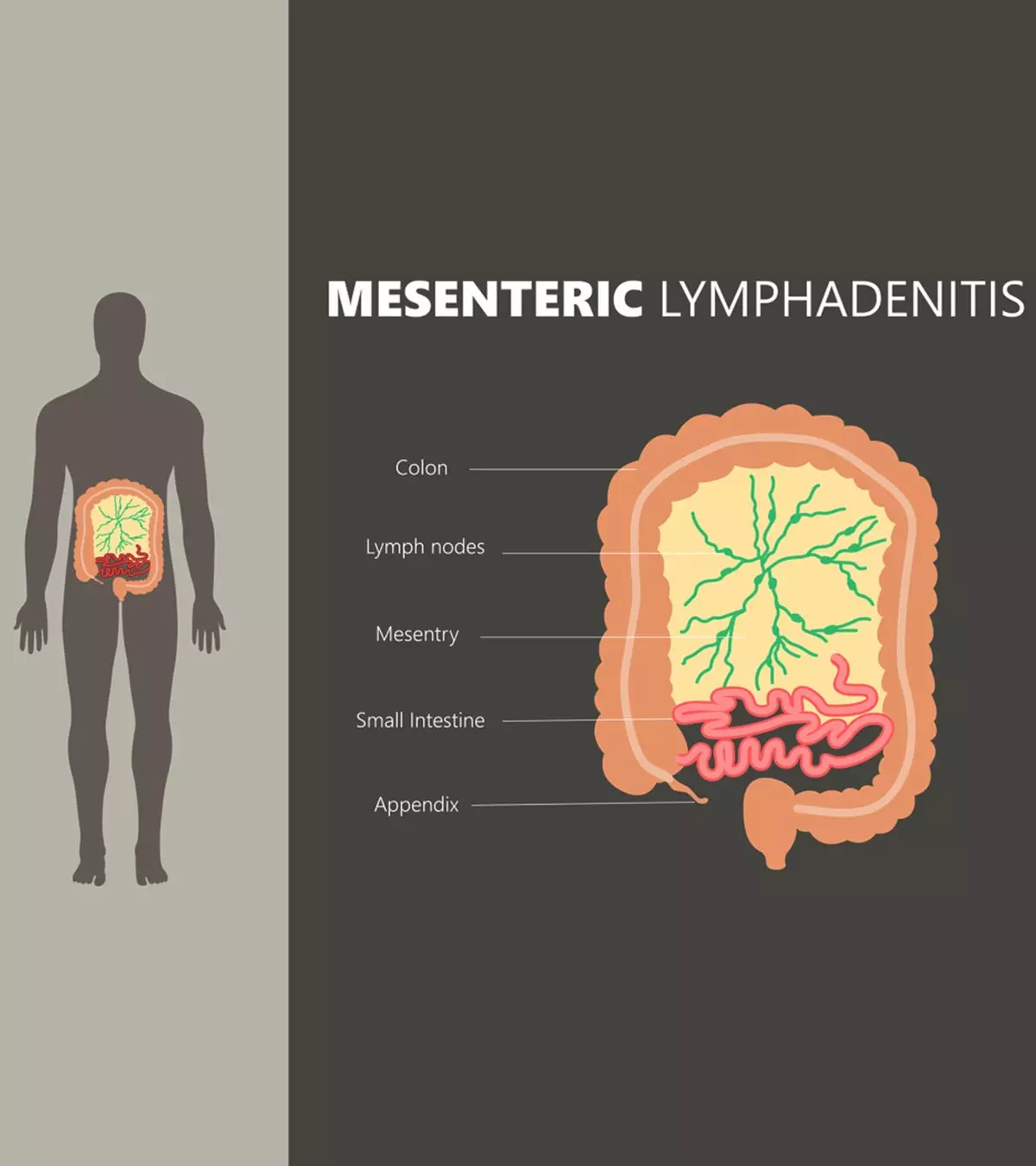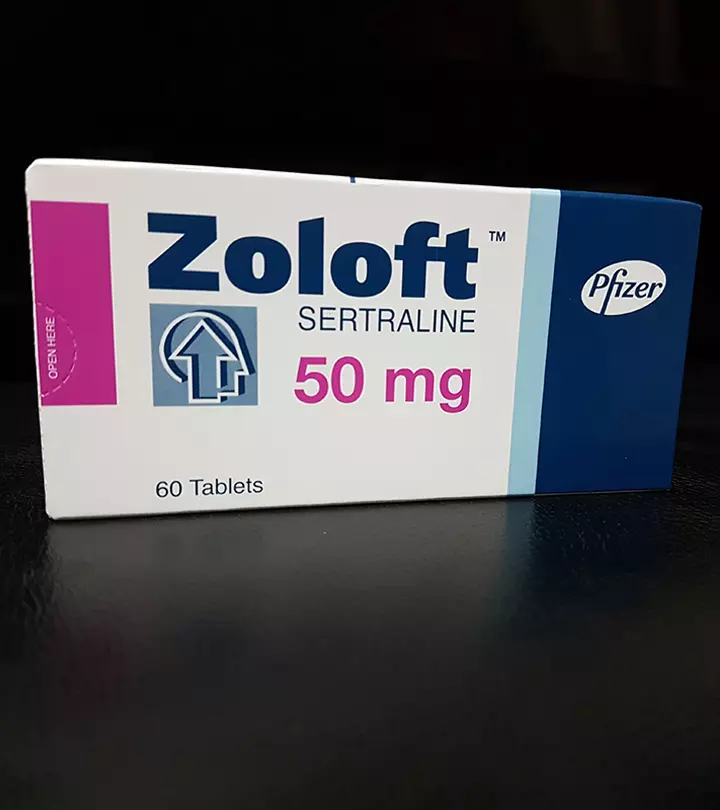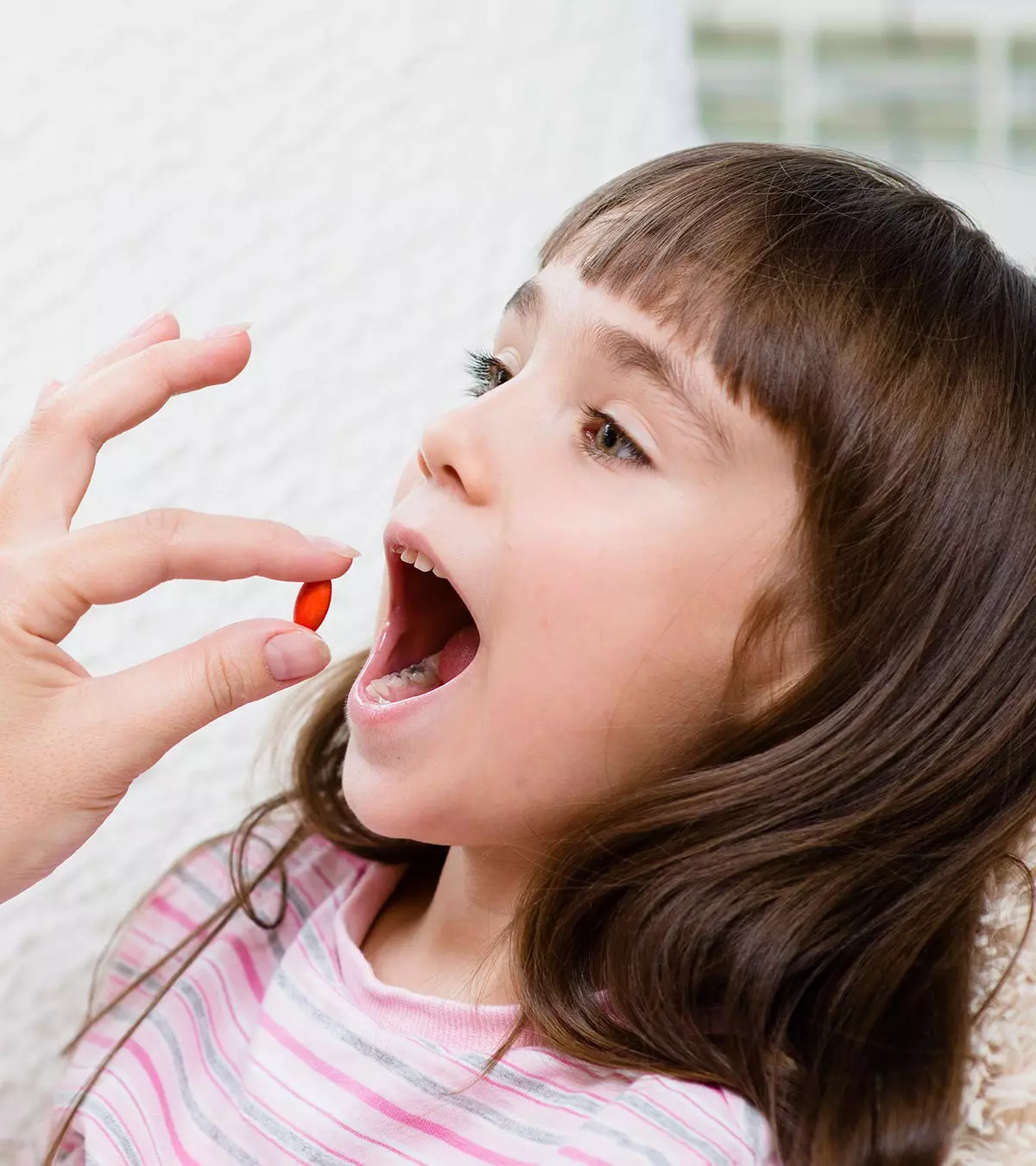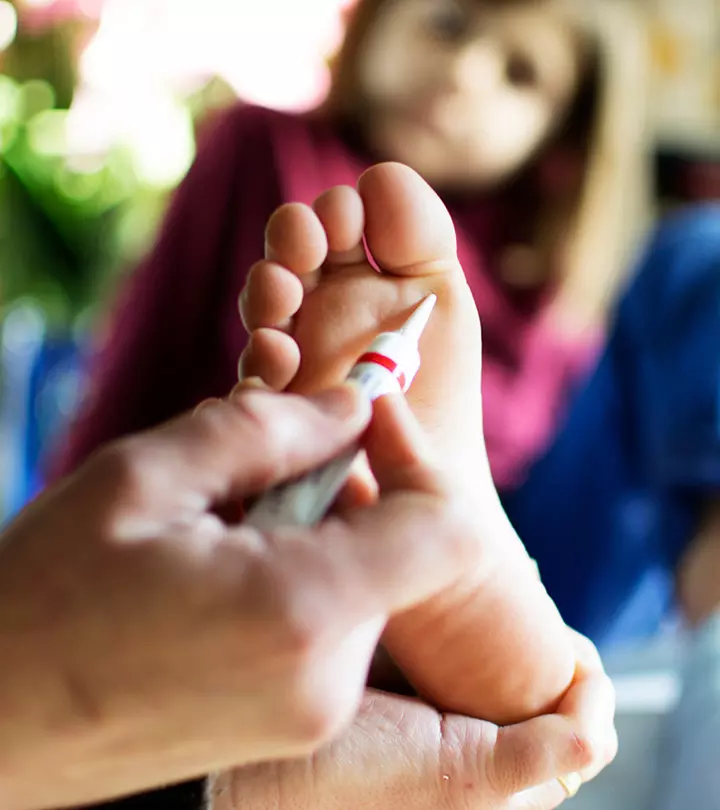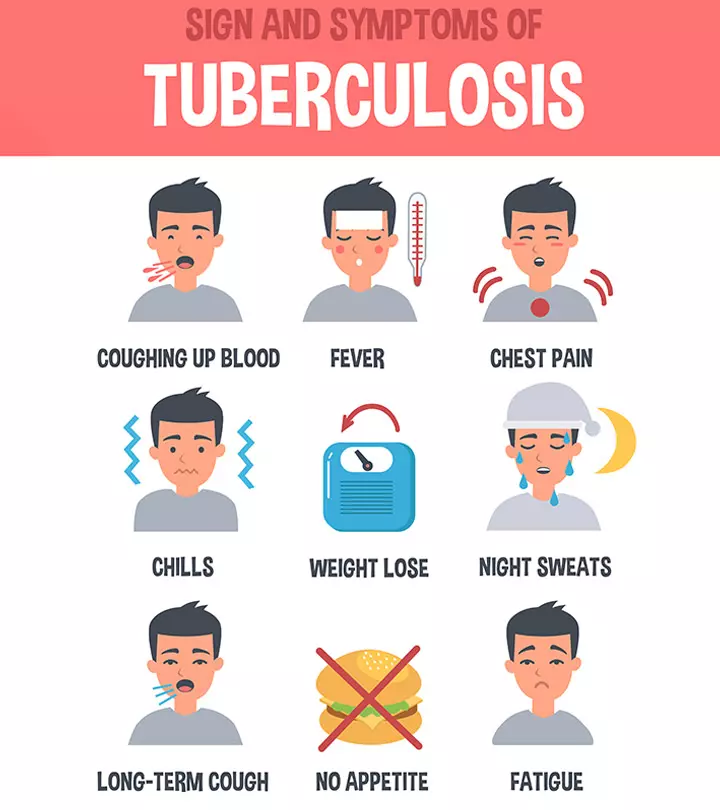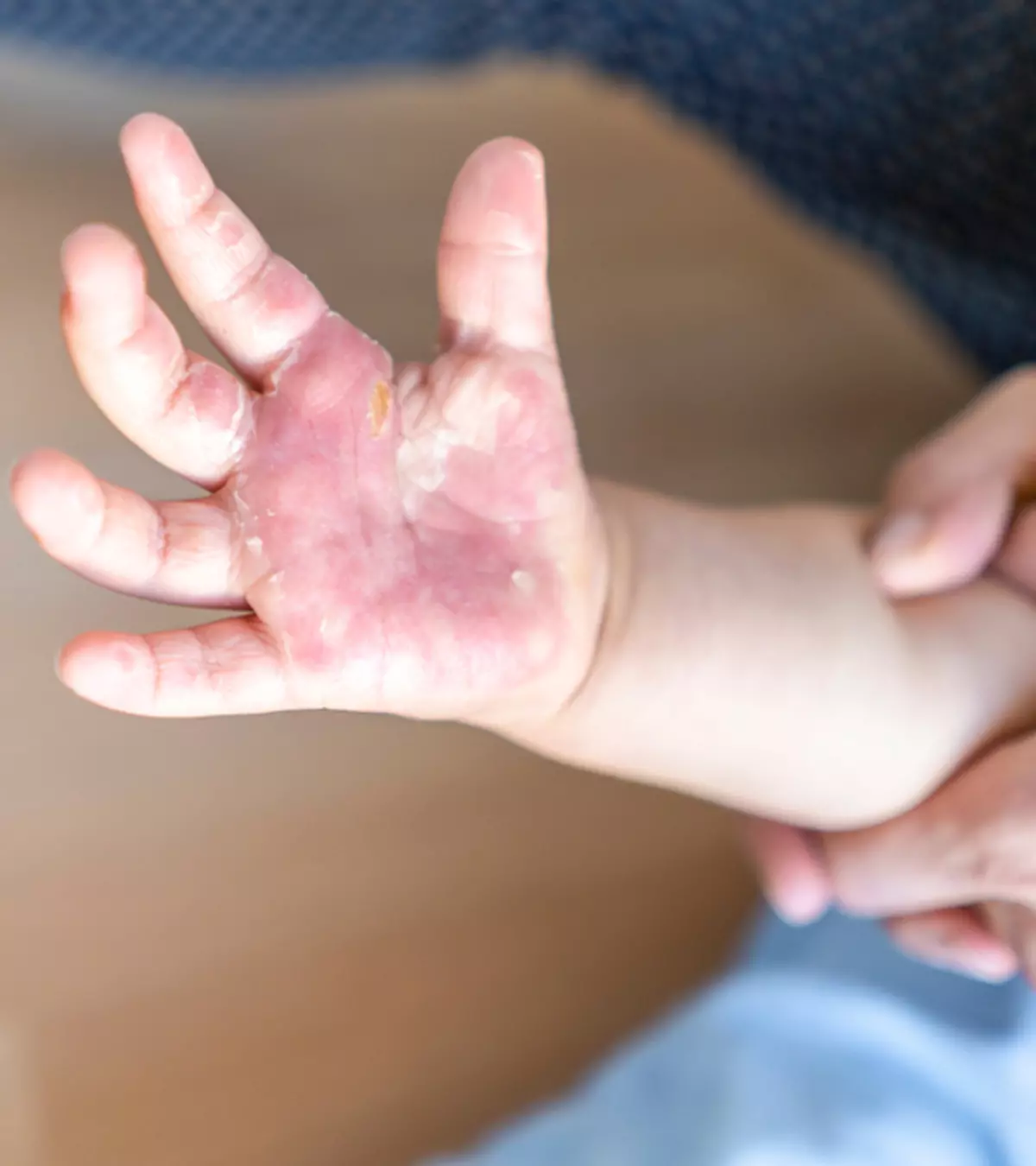
Image: iStock
Heart rate indicates the number of times the heart beats in a minute. The heart rate in children may vary depending on their age. Usually, younger children may have a higher heart rate than older children. Our hearts beat in a rhythm, and the irregularities of rhythm are called arrhythmia. The abnormal heart rate can be too fast or too slow. Although arrhythmia in children is not uncommon, some may have it due to underlying medical conditions. Read this post to learn about children’s normal and abnormal heart rates and ways to manage them.

Key Pointers
- Children’s resting heart rate is around 60 bpm and can increase to 220 bpm during physical activity.
- Abnormal heart rate symptoms include chest pain, weakness, palpitations, and dizziness.
- Abnormal heart rate is common in children with congenital heart disease, narrow heart valves, or family history of arrhythmia.
- Managing abnormal heart rate can involve regular check-ups, a healthy diet, exercise, and adequate rest.
What Is The Normal Heart Rate In Children?

A child’s heart rate is different from that of an adult. Usually, the average heart rate of children is 60 beats per minute when they are resting, while it can go as high as 220 beats when they are active. Infants have a higher heart rate than children. The average ‘normal’ heart rate for kids depends on their age group. The following are the average resting heart rates (pulse rates) for children of different age groups.
| Age | Average Resting Heart Rate ( Beats Per Minute) |
|---|---|
| 3 to 4 | between 80 and 120 |
| 5 to 6 | between 75 and 115 |
| 7 to 9 | between 70 and 110 |
| 10 years or more | between 60 and 100 |
The heart rate varies from one child to another and depends on their age and activity levels (1).
 Experts say
Experts sayWhen And How To Check A Child’s Pulse Rate

Checking a child’s heart rate or pulse rate is usually not a need-to-know, but a good-to-know skill for parents. However, If your child has a medical condition that needs monitoring of their heart rate regularly, it is good to check the child’s pulse as ordered by the doctor. You also need to check the heartbeat when the child:
- Complains of their heart racing or experiences palpitationsiAn irregular, rapid, or strong heartbeat
- Feels that the heart is skipping a beat
- Has chest pain

- Has trouble breathing suddenly (not caused by asthma)
- Has the lips or skin turning pale gray or blue suddenly
While placing the stethoscope on their chest, you may hear a swishing or whooshing sound that indicates turbulent blood flow, also known as heart murmurs.
An accurate reading of the pulse is essential to understand whether the child is experiencing abnormalities in heart rates. We have explained the process of testing the pulse in easy steps below.
- The first step is to know the pulse points – or places where the artery is close to the skin. The neck and the wrist are the two places where the arteries are the closest to the skin. You can also check the pulse behind the knees, on the top of the foot, in the groin, on the elbow when the hand is stretched, and at the temple, although not easily (1).
- The child should have been resting for at least 10 minutes before you check the pulse.
- Have the child extend his or her hand out with the palm facing up. Place the index finger and the middle finger together on the wrist, as shown in the image. You will feel a thumping against your finger.

- Use a clock or a timer to count the beats pulsing against your hand. Count the number of beats in 15 seconds.
- To get the pulse rate, multiply the number of beats recorded in 15 seconds by 4. For instance, if you’ve counted 20 beats in 15 seconds, the per-minute heart rate would be 100 (2).
The thumb might also have a pulse in some people, so avoid using it to check the pulse rate. Your doctor will also check for the quality or strength of the pulse to see if it is regular or erratic.
Irregular Heartbeat (Arrhythmia) In Children

Change in the heart rate is normal. When your children are physically active, their heart rate is usually higher. And when they are resting, it could be lower. Likewise, the child’s heart rate can increase considerably during strenuous exercises. The faster the heart beats, the higher the amount of blood flow in a period of time, thereby a higher cardiac output.
But when the heart’s rhythm or rate changes drastically without any physiological triggers, it is abnormal. This condition is called arrhythmia or irregular heartbeat. This could indicate a heart problem or other underlying medical conditions. A fast heart rate might be accompanied by palpitations (noticeable sudden, rigid heartbeat), dizziness, and sometimes fainting (3).
 Quick fact
Quick factSymptoms Of Abnormal Heart Rate In Children
Arrhythmia can occur at any age and can be diagnosed through proper tests. The symptoms are few or none, which makes detecting it on your own a bit difficult. Signs and symptoms that you may see include (4):
- Rapid or slow respiratory rate in children
- Dizziness
- Weakness or tiredness
- Palpitations
- Pain in the chest
The heart needs to follow a certain rhythm to function properly for a long time. If it doesn’t, the biological processes can get disturbed and lead to potential health risks in the future. However, early identification of the symptoms can allow for timely intervention.
In adults, conflicting evidence exists on the relationship between heart rate and blood pressure. Studies outline that an elevated heart rate may indicate central and peripheral high blood pressure. However, for children, no such evidence exists.
Recounting the impact of anxiety disorder on his daughter’s heart rate, blogger and father Steve Bladon says, “When she awakes, even the gentlest mention of school causes Amelia to panic. Her heart rate soars, and she’s shaking. Over the next few hours, I do my best to reassure Amelia, telling her she will be ok and that the worry will pass. In actual fact, the worry turns into a panic attack. It’s frightening. I’m in new territory here. My daughter has a tummy ache, a headache, a racing heart and she’s feeling sick. The high level of adrenalin – central to her anxiety disorder – causes her heart to race frequently and at random times. It also creates an over-riding sense of fear and doom. Amelia needs lots of reassurance (i).”
Types of Arrhythmia
There are many types of arrhythmia that your child can develop. While most of these are non-threatening, some are serious conditions that need constant medical attention.
1. Tachycardia
This is a condition where the heart beats too fast. This condition could be normal or abnormal based on age and physical condition. A teenager is said to have tachycardia if the resting heart rate is higher than 90 beats per minute (5), whereas, tachycardia in kids is a condition where the heart rate can go higher than 100 beats per minute. However, since the standard average heartbeat in children is usually 100 or more, it may or may not be considered tachycardia depending on the child’s age.
Causes of tachycardia in children can include physiological changes, medications that the child may be taking, and any other form of arrhythmia. Sometimes, an underlying heart condition can also result in an elevated heart rate in the child. Additionally, factors such as dehydration, fever, and emotional stress can trigger tachycardia in children (18).
There are three known types of tachycardia (5).
Sinus tachycardia is the natural increase in the heart rate of the child. The sinus node, which is also known as the pacemaker of the heart, is responsible for sending out the electrical impulses in the body that make the heart’s muscles expand and contract, thereby creating a steady rhythm of the heartbeat.
The sinus node shoots faster impulses when the metabolic activity is high and slows down when the body is at rest (sleeping). So, in most cases, sinus tachycardia is a natural phenomenon caused due to change in activity levels, and this abnormality results in sinus arrhythmia in children.
Supraventricular tachycardia (SVT) is one of the most common types of tachycardia in children. Research suggests that supraventricular tachycardia affects approximately 0.1-0.4% of children (21). SVT does not cause any life-threatening problems in most children and teens, and it does not bar children from having a normal childhood. However, if the tachycardia is frequent, then your doctor might prescribe medications to control it.
Ventricular tachycardia in children is a condition when the fast heart rate in the child is triggered by the lower chambers or ventricles of the heart. Although uncommon, this type of tachycardia can be serious, and sometimes life-threatening for children. If you find that your child’s heart skips a beat or is racing fast, or the child experiences lightheadedness, episodes of chest pain and fainting, then take them to the doctor (6).
Wolff-Parkinson-White Syndrome is the presence of an additional pathway in the heart’s electrical system, causing palpitations, shortness of breath, and dizziness in children. The Children’s Hospital of Philadelphia Research Institute study indicated that Wolff-Parkinson-White Syndrome is prevalent among 0.03% of children aged between one and eighteen. The doctor might treat this heartbeat disorder with medication. If that doesn’t work, they may recommend some tests and eliminate the pathway using a catheter or surgery.
2. Bradycardia
Bradycardia is the opposite of tachycardia. When the heart rate is too slow, say less than 60-50 beats per minute, the child is likely to have bradycardia (7). However, the doctor will consider the age and the activity levels and patterns of the child before diagnosing it as bradycardia.
Other heart rate problems in children include the complete heart block and sick sinus syndrome (8). Sinus bradycardia is a medical condition seen in premature infants due to medical exposure before birth, hypothermiaiA significant drop in body temperature , or breathing problems.
 Quick fact
Quick factWho Is At A Risk Of Developing Arrhythmia?
Arrhythmia is more common in children with congenital heart diseases, narrow heart valves, family history of arrhythmia and other heart disorders. In the case of teenagers, lifestyle habits such as alcohol consumption, smoking, and illegal drug usage can also cause Arrhythmias.
Medical conditions such as obesity, diabetes, sepsisiThe body’s most extreme response to an infection characterized by bacteria/toxins entering the bloodstream , sleep apneaiA sleep-related disorder in which a person repeatedly pauses breathing during sleep , etc. may also increase the risk of Arrhythmias.
Other things, such as heart surgeries, medications, or imbalance of certain chemicals, such as potassium in the body, can also lead to irregular heart rate in children (9).
When To Visit A Doctor?
Often, arrhythmia or abnormal heart rate is the result of a change in physical activity, making it a common occurrence in children. However, if your child’s heart rate is too fast or slow, regardless of the physical activity, and if it happens often, a medical check-up is necessary. Sometimes, an erratic heart rate or persistently slow heart rate, along with fatigue in children, could indicate an underlying heart problem, which you should not neglect.
Dr. Michael Knapton, Associate Medical Director at the British Heart Foundation, explains that a rapid heart rate in children may result from normal physiological responses, such as excitement or physical activity, or underlying medical conditions like cardiac or metabolic disorders. He recommends medical evaluation if a child’s heart rate consistently remains like (for example, above 140 bpm) to rule out potential health concerns (22).
Arrhythmia Treatment

Abnormal heart rate in children could be treated by the following. The doctor will examine your child and prescribe the best possible treatment (9).
- Medication
- Cardiac catheterization with radio frequency energy application
- Use of implant devices such as pacemakers and implantable cardioverter defibrillator
- Cardioversion, which involves sending electrical shock or impulses to the heart, to convert the erratic heart beats into a proper rhythm
- Surgery to treat atrial fibrillationiAn irregular heart rhythm that initiates in the upper chambers of the heart
Doctors may also teach you how to increase or reduce the heart rate of the child to bring it to a normal range.
 Quick fact
Quick factLiving With Arrhythmia
You may not always be able to prevent arrhythmia because it can also be genetic. In cases when it is not hereditary, maintaining heart health is the only way to avoid triggering tachycardia or bradycardia. If your child’s heart rate and rhythm are not normal, make sure that you:
- Go for check-ups regularly. Take the help of a professional to keep track of your child’s heart health.
- Check the child’s pulse rate regularly, as advised by the doctor. You can use a heart rate monitor or a smartwatch for children that can help monitor your child’s heart rate regularly.
- Maintain a journal to track changes in your child’s heart rate.
- Give your child a healthy diet with low fat and cholesteroliA lipid molecule found in most body tissues, needed for cell function and hormone production to maintain heart health.
- Help your child get adequate exercise, as well as rest, to keep the heart rate within the normal range.
- Stay informed about the developments in treatments or prevention techniques available for abnormal heart rate or rhythm.
- Regularly discuss any changes, including diet, exercise, and medications, with your child’s doctor.
 Point to consider
Point to considerFrequently Asked Questions
1. Is it normal for a child’s heart to beat fast when sick?
Yes, factors such as fever, cold, or allergies can cause a child’s heart rate to increase (10).
2. What do I do if my child has a rapid heartbeat?
If you notice your child has an increased heart rate or palpitations, consult a doctor to find out the underlying cause. You can monitor their heart rate and note down when it seems to increase and what may be triggering the palpitations. Although palpitations do not always indicate a concern, it is essential to rule out any severe causes in time (11).
3. Can dehydration cause a high heart rate?
Dehydration can cause a rapid heart rate as blood volume decreases. This makes the heart beat faster to compensate for lower oxygen supply. To restore a regular heart rhythm, it’s important to rest, hydrate, and find a cool place (12).
4. How does the heart rate in children differ from adults?
The heart rate in children varies based on age, with higher rates than adults. Infants’ pulse rate is 100-160 bpm, toddlers’ is 90-150 bpm, preschoolers’ is 80-140 bpm, school-age children’s is 70-120 bpm, and adolescents’ is 60-100 bpm. In contrast, adults usually have a resting heart rate between 60 and 90 bpm (13) (14).
5. How can I help my child maintain a healthy heart rate?
Parents can assist their children in maintaining a healthy heart rate by managing their diet to sustain a healthy weight and encouraging them to engage in enjoyable activities like organized sports or exercising with family and friends for at least one hour a day (15).
6. Can exercise or physical activity affect my child’s heart rate?
Yes, exercise or physical activity can influence a child’s heart rate. When exercising, the cardiorespiratory system functions more vigorously, delivering additional oxygen to the muscles. Consequently, the heart rate rises, enabling the pumping of oxygenated blood to the active muscles (16).
7. Can stress or anxiety affect my child’s heart rate?
Yes, a study has found that children and adolescents with childhood anxiety disorder exhibited notably diminished heart rate variability compared to healthy individuals (17).
8. What are the long-term effects of an abnormal heart rate in children?
The long-term consequences of an irregular heart rate in children can differ based on the underlying cause. Although heart palpitations typically don’t signify a health issue, they can occasionally indicate a severe condition. A medical assessment is essential to identify the cause and determine suitable treatment (11).
It is a good practice that parents know how to check the heart rate in children and monitor it, especially if they have a heart problem or other issues affecting the heart. Although a change in the level of physical activity might commonly lead to arrhythmia in children, if your child’s heart rate is too fast or too slow and they show signs of difficulty while breathing, it is advised to consult the doctor immediately. Ensure that your child has a proper diet and consumes their medications regularly to avoid triggering the signs of arrhythmia.
Infographic: What Is A Holter Monitor For Children?
Holter monitors are small wearable devices to track heart rhythms. This is often useful in identifying abnormal heart rhythms not seen on the electrocardiogram (ECCG). Go through the infographic to learn more about the Holter monitor for children. Illustration: Momjunction Design Team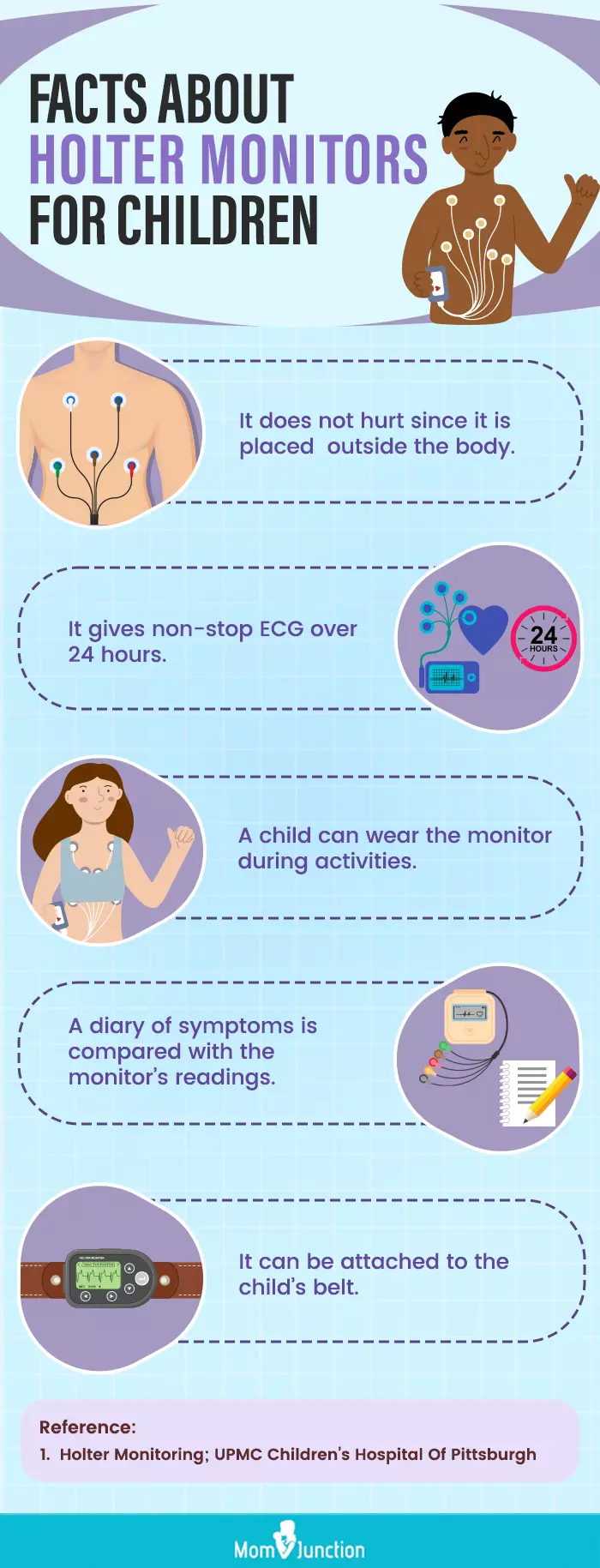
Illustration: Abnormal Heart Rate In Children: Types Symptoms And Risks

Image: Dall·E/MomJunction Design Team
A healthy heart rate for a child can vary depending on age. Learn more in this informative video!
Personal Experience: Source
MomJunction articles include first-hand experiences to provide you with better insights through real-life narratives. Here are the sources of personal accounts referenced in this article.
i. The Diary of an Anxious Child;https://stevebheadteacher.wordpress.com/2025/03/01/the-diary-of-an-anxious-child/
References
1. Pulse; Medline Plus; US National Library of Medicine
2. Dianne Pickering; How to measure the pulse; Community Eye Health Journal
3. Fast Heart Rate; C.S Mott Children’s Hospital
4. Arrhythmia; Medline Plus; US National Library of Medicine
5. Types of Arrhythmia in Children; American Heart Association
6. Ventricular Tachycardia; C.S Mott Children’s Hospital
7. Ajay Dharod, et al.; Association of Asymptomatic Bradycardia With Incident Cardiovascular Disease and Mortality; Jama Internal Medicine (2016)
8. Sick sinus syndrome; C.S Mott Children’s Hospital
9. Arrhythmia; National Heart, Lung, and Blood Institute
10. Fever; Better Health, Victoria State Government
11. Palpitations in children and young people; James Paget University Hospitals
12. 5 Key Symptoms and Signs of Dehydration; Reid Health
13. Pediatric Respiratory Rates Age Rate (breaths per minute); New York State Department of Health
14. Robert Avram et al.;Real-world heart rate norms in the Health eHeart study(breaths per minute);NPJ Digital Medicine; PMC (2019)
15. Helping Children With Congenital Heart Disease Stay Healthy, Active & Fit;; HealthyChildren.org
16. Eleanor D. Muise et al.Ready, Set, Go! How the Heart and Lungs Respond to Exercise;Frontiers (2025)
17. Rajiv Kumar Sharma et al.Heart Rate Variability Study of Childhood Anxiety Disorders; Journal of Cardiovascular Disease Research; PMC (2011)
18. Arrhythmias in Children; Cleveland Clinic
19. Treating Arrhythmias in Children; American Heart Association
20. Fast, Slow and Irregular Heartbeats (Arrythmia); American Academy of Pediatrics
21. Carolina A Escudero et al.,Approach to Wide Complex Tachycardia in Paediatric Patients; CJC Pediatric and Congenital Heart Disease (2025)
22. My daughter has a rapid heart rate. Should I worry?; British Heart Foundation
Community Experiences
Join the conversation and become a part of our nurturing community! Share your stories, experiences, and insights to connect with fellow parents.
Read full bio of Dr. Vikas Kohli
Read full bio of Dr Bisny T. Joseph
Read full bio of Swati Patwal
Read full bio of Anindita Ghatak





